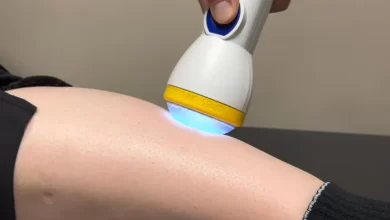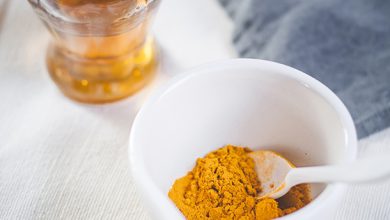
Sometimes pain doesn’t go away just because the swelling did. For many people, lingering discomfort creeps into daily life long after the initial injury heals—or even without a clear injury at all. That’s where the role of a sports medicine doctor becomes a lot more interesting than people think.
Regenerative Therapies Target Persistent Pain Sources
A sports medicine doctor doesn’t only treat torn muscles or broken bones. They also help stimulate healing in deeper, harder-to-reach areas through regenerative treatments. These include platelet-rich plasma (PRP) injections and stem cell therapies designed to boost the body’s repair process. These methods target tendons, ligaments, and cartilage that have worn down over time—common pain points in chronic conditions. It’s a different approach than just masking pain with medication. Instead, these treatments aim to restore tissue health and function.
Chronic pain in knees, hips, or shoulders can develop from repetitive use, old injuries, or age-related wear. A sports medicine doctor near me might suggest orthobiologic solutions to address pain without surgery. Regenerative medicine is often used when rest and therapy aren’t enough, but invasive procedures are too extreme. This can be a game-changer for people who’ve tried everything else but still can’t get comfortable walking, working, or even sleeping.
Comprehensive Musculoskeletal Evaluations Beyond Acute Injury
Pain without a recent injury still deserves attention. That’s why a sports medicine doctor often conducts a full musculoskeletal evaluation—not just on the problem area, but how it connects to the rest of the body. They look at posture, muscle balance, joint alignment, and even gait mechanics. These assessments can reveal deeper causes of chronic pain that general practitioners may miss.
This type of examination helps uncover how one issue can lead to another. A tight hip could be the real reason behind low back pain. Poor foot alignment might stress the knee. With orthopedic sports medicine training, these doctors know how to read the body as a system, not in isolated parts. That’s why chronic pain sufferers often find answers they didn’t expect in a sports medicine clinic.
Non-Surgical Interventions for Recurrent Discomfort
Surgery is rarely the first move in sports medicine. Chronic pain is often better managed through less invasive solutions. That might mean ultrasound-guided injections, physical therapy programs, or braces and orthotics tailored to the individual. The goal is to break the pain cycle before it becomes permanent. A sports medicine doctor focuses on restoring movement and reducing inflammation without cutting into tissue.
People dealing with repetitive pain—like tennis elbow, runner’s knee, or plantar fasciitis—may not need an operating room at all. Instead, a sports medicine doctor near me can offer targeted relief by isolating the problem and using non-surgical treatments to manage it long term. These methods help patients return to daily activities without the downtime or risks that come with surgery.
Tailored Rehabilitation Plans Addressing Chronic Conditions
Chronic pain rarely responds to one-size-fits-all treatments. Sports medicine doctors understand this and create rehab plans that are as individual as the person dealing with the pain. The plan may involve gradual strengthening, flexibility routines, and targeted exercises that correct imbalances. Rather than just working on pain relief, they work toward functional recovery.
For example, a patient dealing with recurring shoulder pain might receive a custom series of movements designed to build up rotator cuff stability. Someone with lower back pain could benefit from core strengthening and posture correction. Orthopedic sports medicine isn’t just about treating the area—it’s about improving how the whole body works together so that pain doesn’t keep coming back.
Integrated Pain Management for Long-Term Relief
A sports medicine doctor treats chronic pain using a mix of treatments that go beyond physical therapy. This includes joint injections, dry needling, and medication when appropriate. But the secret is often in how these pieces are combined. Integrated pain management focuses on addressing the root causes while easing symptoms, so people can actually move without hurting.
Instead of rotating between different specialists who only focus on one aspect, patients often find relief through a single, well-coordinated plan. A sports medicine doctor near me might combine activity modification with hands-on treatment and guided exercise, keeping the patient engaged and involved throughout recovery. That structure makes a big difference in staying ahead of chronic pain, rather than reacting to flare-ups.
Specialized Orthobiologic Treatments for Lasting Improvement
Orthobiologics are more than buzzwords—they’re reshaping how long-term pain is treated. These substances, derived from the patient’s own body, encourage healing where it’s needed most. PRP and bone marrow aspirate concentrate are common tools used by orthopedic sports medicine specialists. They’re injected into joints or soft tissue areas that have stopped responding to conventional care.
This kind of treatment is ideal for people with chronic tendonitis, degenerative joint conditions, or persistent pain that hasn’t responded to therapy. A sports medicine doctor uses diagnostic imaging to guide the application of orthobiologics directly to the problem area. That precision leads to better results and reduces the risk of unnecessary procedures. Many patients find these treatments help delay—or avoid—joint replacements altogether.
Functional Movement Strategies for Sustainable Pain Reduction
Sometimes, pain sticks around because of how people move. Sports medicine doctors specialize in analyzing and correcting those movements. They assess walking patterns, lifting techniques, and posture to identify stress points. From there, they teach adjustments that support long-term comfort. It’s not just about getting rid of pain—it’s about not inviting it back.
Functional movement strategies focus on everyday habits. Whether it’s bending to tie shoes or sitting at a desk, the small things add up. With guidance from a sports medicine doctor, patients learn how to move better, not just more. That often leads to sustainable relief—something pain medications alone can’t offer. For anyone searching for a sports medicine doctor near me who looks beyond temporary fixes, these strategies bring real, lasting change





